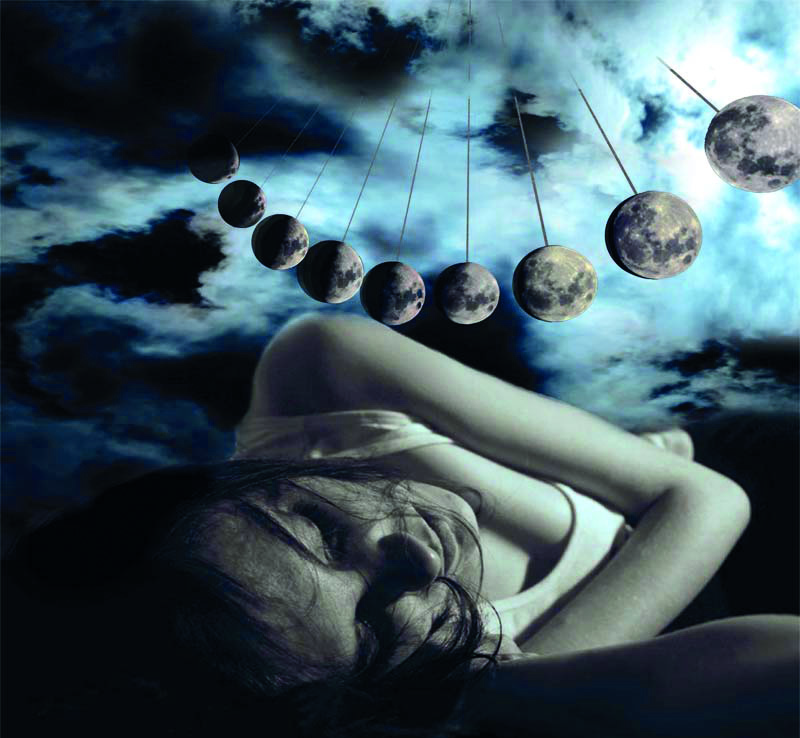 In Shakespeare’s ‘Othello,’ Emilia tells Othello, “It is the very error of the moon. She comes more nearer earth than she was wont. And makes men mad.” The idea that a full moon can stir up emotions, provoke inexplicable behaviour, and even cause physical illness isn’t just a literary figure of speech, it’s a strongly held belief, even today. In fact, several mental health professionals profess that the full moon affects at least some of their patients. The very expression ‘lunacy’ dates back to the fifteenth century, when it was believed that the moon and its phases could make people become more or less aggressive, depending on its place in the lunar cycle.
In Shakespeare’s ‘Othello,’ Emilia tells Othello, “It is the very error of the moon. She comes more nearer earth than she was wont. And makes men mad.” The idea that a full moon can stir up emotions, provoke inexplicable behaviour, and even cause physical illness isn’t just a literary figure of speech, it’s a strongly held belief, even today. In fact, several mental health professionals profess that the full moon affects at least some of their patients. The very expression ‘lunacy’ dates back to the fifteenth century, when it was believed that the moon and its phases could make people become more or less aggressive, depending on its place in the lunar cycle.
The Lunar Impact
Because the moon’s cycles are known to influence natural phenomena like the ocean tides, some cultures believe that lunar phases also influence human emotions, behaviours, and health. There seem to be a link between the phases of the moon and changes in symptoms of bipolar disorder. There is also some evidence that a full moon can lead to less deep sleep and a delay in entering into REM sleep. In addition, some studies have shown a slight change in cardiovascular conditions during full moon. It is also believed that there is a link between the lunar cycle and fertility, birth rates, and other reproductive factors. This may be because the menstrual cycle and the lunar cycle are coincidentally similar in length.
Scientists continue to study how the moon influences various physiological and psychological systems and research indicates that several species have adapted some of their biological cycles to line up with the lunar cycle. The reproductive cycle of marine animals like tropical corals during full moon nights, annelid worms during the waxing moon and the emergence of midges at neap tides (a moderate tide that occurs when the sun and moon are at right angles to each other and the moon appears half full), is evidence of the lunar connection.
Moon And Mind In The Veda
In the Veda, the moon, is referred to as Chandra and revered as a deity closely associated with the mind. In fact, the Vedic texts describe the moon as born from the mind of the cosmic being Purusha, signifying a deep connection between the lunar cycles and human consciousness. This reverence is expressed through hymns and rituals performed during different lunar phases, particularly the full moon which is considered as a time of heightened spiritual energy.
The Rig Veda states ‘chandrama manaso jaathah,’ meaning the moon was born from the mind, signifying its role as the ruler of mental faculties. In some Vedic texts, the moon is also closely linked to Soma (Avesta Hoama) often associated with the life-giving elixir and the power of rejuvenation.
Mah Bakhtar
Mohor or Mah Yazata is Avesta Maongh, the divinity presiding over the moon. Since the moon is known to affect our mind and mood, invoking Mah Yazata by reciting the Mah Bakhtar Nyaesh (litany) or Mah Bakhtar Yasht (Hymn) is considered highly beneficial for peace of mind and mental stability.
The term Bakhtar is derived from the Pahlavi verb Bakhtan which means ‘to divide’ or ‘to establish fortune.’ During the Sasanian era moon was viewed as Bakhtar – the giver or distributor of fortune. In the Mah Bakhtar Nyaesh, the moon is described as having ‘gav chitra’ or seed of the earth, and earth in Yasna 29 is symbolically represented in the form of a cow.
Mino Ram (giver of joy) along with ‘Mohor’ (Mah) and ‘Gosh’ (Geush or spirit of earth) Yazata are the three Hamkar or co-workers of Vohu Mana or Bahman Ameshaspand (Good mind). It is an interesting link between the earth and moon together with the divinities of joy and the good mind.
The Mah Bakhtar Nyaesh can be recited daily in any of the five Gah (watch of the day). The Persian Rivayat recommend that this litany should be prayed at least on the occasion of the New Moon (Chand-raat), Full Moon (Punam) and No Moon (Amaas).
No Moon Day
People often ask why Amaas or Amavasya is not considered auspicious. The reason is quite simple – no moon means darkness, especially at night, signifying not just lack of visibility but also a period for negative energies to gain strength. Darkness is also symbolically associated with ignorance. It is believed that the earth broods on Amavasya and the life process slows down on the planet. Both, Hindus and Parsis in India avoid certain activities on Amavasya such as starting a new project or venture, hosting a wedding or taking financial decisions. However, offering prayers and acts of charity on this day is encouraged.
While Amavasya is not considered auspicious from a worldly perspective, it is considered spiritually good. The word Amavasya is derived from the Sanskrit words ama (which means together or conjunction) and vasya (which means to dwell or cohabit). Symbolically, Amavasya represents a time of introspection, renewal, and the opportunity for new beginnings. Amavasya is believed to be a time when the sun and moon align, creating a powerful energy shift on Earth. Astrologically, this alignment is said to influence human emotions, behaviour, and spiritual growth. The absence of the moon’s light during Amavasya signifies darkness, making it a favourable time for self-reflection.
In the Hindu tradition, Shiva, is often linked to Amavasya, since His destructive power is seen as a necessary step before the cycle of creation can begin again. Amavasya, therefore holds one of the greatest secrets of Shiva – the infinite silence in which Shakti’s potential remains unmanifest, waiting to be born. This void of Amavasya is not emptiness, it is the womb of all creation, the sacred space where Shiva’s wisdom unfolds.
Thus, amavasya teaches us that the void is not death – it is the source of all possibilities. Those who embrace this void on Amavasya can manifest anything, for in nothingness, all things become possible. No wonder our scriptures encourage us to pray the Mah Bakhtar Nyaesh on the no moon night when the moon is not even visible and the night is cloaked in darkness.
Indeed, the moon, with its mystifying glow and ever-changing phases, has captivated human imagination for generations. It is an emblem transcending cultures and philosophies weaving a complex tapestry of symbolism and significance. The moon’s ever-changing appearance symbolizes cycles and the passage of time. It’s a reminder of the constant change in life and the natural ebb and flow of things.
Exploring the various phases of the moon opens up a world of connection, intention, and self-discovery. From the promising beginnings of the New Moon to the reflective wisdom of the waning gibbous, each phase offers unique insights and opportunities for growth. Whether one is harnessing the energy of the moon for spiritual growth or simply finding solace in its ever-changing glow, understanding these lunar cycles can be a transformative journey. Embrace the rhythm of the moon, align with its phases, and find a beautiful harmony in life that resonates with the natural world around!
- Why Pray In A Language We Do Not Understand? - 29 March2025
- Celebrate Nature’s New Year With Purity And Piety of Ava - 22 March2025
- Celebrate Navruz 2025 With The Spirit Of Excellence And Wholesomeness - 15 March2025
